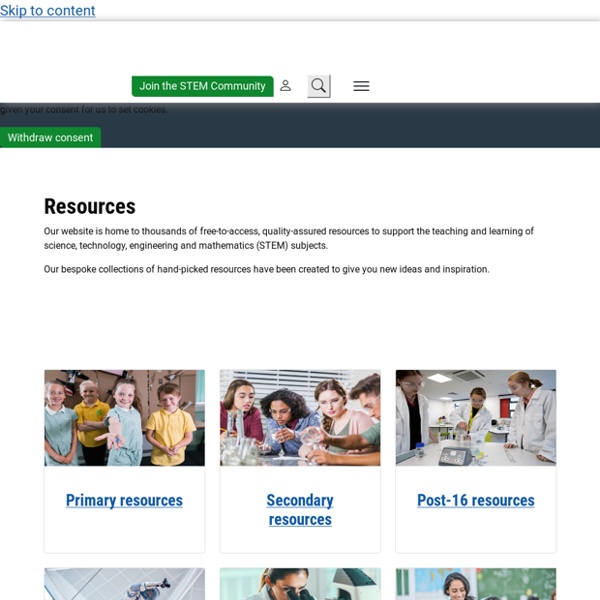



Home - Barefoot Computing Barefoot Computing Computing At School (Clear all) Filters (AND between main categories, OR within) View by popularity | View by latest update « previous 1 2 3 4 5 6 7 8 9 … 63 64 next » Computational Thinking Homeworks A few tasks developed to encourage computational thinking skills. Created by Greg Reid, Oct 24 2013 - last modified by Greg Reid, Jun 10 2016, 169 comments CAS Computing Progression Pathways KS1 (Y1) to KS3 (Y9) by topic CAS Computing Progression Pathways KS1 (Y1) to KS3 (Y9) by topic Created by Mark Dorling, Jan 21 2014 - last modified by Mark Dorling, Nov 03 2015, 228 comments Primary computing keywords posters Key words from the 2014 computing curriculum for KS1 and KS2 in pupil speak. Created by Pete Dring, Feb 08 2014 - last modified by Pete Dring, Jun 27 2017, 197 comments Book of programming challenges A set of programming challenges to give to students Created by Stuart Lucas, Sep 18 2012 - last modified by Michael Kölling, Sep 20 2012, 227 comments OCR GCSE Computing: An Unofficial Teacher's Guide
The Resource Pack Explore how girls can be happy and successful at work Welcome to People Like Me – the revolutionary approach that uses girls’ natural tendency to create and articulate their self-identity with adjectives to help them see themselves working happily and successfully in science, technology, engineering or maths (STEM). This pack equips teachers and STEM Ambassadors with materials that can show girls from a diverse range of backgrounds that, if they continue with at least one STEM subject post-16, they are likely to have better prospects and more career choice. The pack contains a quiz to show girls where people just like them are happy and successful in their work. The pack is targeted at girls aged 11-14. WISE recommends using the pack in an all-girl setting, where girls have been found to feel more comfortable sharing their strengths and aspirations. Find out more about the People Like Me project. Pack contents Download the resources
5 Ways To Utilize Kids Programming Toys | KinderLab Robotics Posted By christina On July 24, 2019 in Blog “Children are like wet cement. Whatever falls on them makes an impression.” Those are the words of the late Dr. Haim Ginott, who was a school teacher, a child psychologist and psychotherapist, and a parent educator. The idea of introducing coding to kids down at the preschool and elementary school level has been made possible by the evolving nature of coding itself. Kids learn faster when learning is made fun, and it is beneficial to use programming toys to enhance critical thinking skills — comprising a vast set of problem-solving and analytical capabilities, habits, dispositions and approaches often required in the field of computer science and programming. The question remains, how do coding robots foster learning in Science, Technology, Engineering, Arts, and Mathematics (STEAM)? How Programming Toys Foster Steam Learning Ways To Integrate Programming Toys Into Early Education Curricula 1.
Glossary Practical work in science We are working in partnership with the Gatsby Charitable Foundation and Wellcome Trust on a programme of work exploring how we can better enable all schools and colleges to engage their students with good practical work in science. The programme aims to track changes in practical work over time, to build a secure evidence base on which to inform science curriculum and qualifications reform, and to generate ideas for where and how practical science can be strengthened. Practical work is an essential part of science education. It gives students the necessary skills for higher education and employment, deepens their knowledge of scientific ideas and enables them to engage in the processes of science. Practical work can only flourish when teachers are confident in its use, schools and colleges are sufficiently resourced, and the practical skills gained by students are appropriately recognised in science qualifications. Current projects in this programme include:
National curriculum in England: computing programmes of study Purpose of study A high-quality computing education equips pupils to use computational thinking and creativity to understand and change the world. Computing has deep links with mathematics, science and design and technology, and provides insights into both natural and artificial systems. The core of computing is computer science, in which pupils are taught the principles of information and computation, how digital systems work and how to put this knowledge to use through programming. Building on this knowledge and understanding, pupils are equipped to use information technology to create programs, systems and a range of content. Computing also ensures that pupils become digitally literate – able to use, and express themselves and develop their ideas through, information and communication technology – at a level suitable for the future workplace and as active participants in a digital world. Aims The national curriculum for computing aims to ensure that all pupils: Attainment targets
FREE Apps For Our Floor Robots | TTS The app enables you to write an algorithm, send it and then Blue-Bot will follow your instructions. Blue-Bot helps you code, debug and simulate algorithms for the new National Curriculum for Computing. There are numerous features, which make writing algorithms both fun and educational. Use explore mode to develop algorithms: Step by step programming Instructions are added to the list and once happy place Blue-Bot back at the start and press go Drag and drop programming. Just drag your instructions into the left hand bar to save Include repeats to make things even more fun Program 45 degree turns Challenge mode will add complexity into the algorithm Blue-Bot will add random obstacles, adding complexity to the algorithm needed One or even two directional buttons can be removed Random instructions can be generated, you must predict which square Blue-Bot will end up. Children can also record themselves saying a command and can assign it to a button on Blue-Bot.